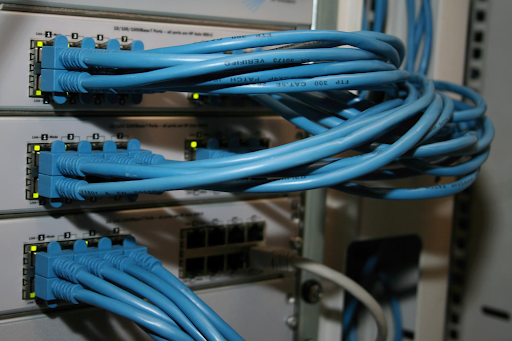
Reliable internet service is a cornerstone of both personal and professional life in the current age. Residents and businesses depend on consistent connectivity for various activities, from video conferencing to streaming services.
Not all internet providers are created equal; service quality can differ greatly depending on several factors. When choosing an internet provider, evaluating the right elements can lead to better decision-making and enhanced user satisfaction.
Performance can vary widely depending on location. Understanding the specific metrics associated with the local area is critical. The speed, latency, and reliability of an internet connection can differ based on infrastructure and local conditions.
Many providers offer performance metrics tailored to regions. Whether you’re checking Lansing internet connection quality, Boston quality, or anywhere else, exploring these metrics helps contextualize speeds and reliability as they pertain to your chosen area. Researching customer reviews from specific locales allows for a more focused assessment of the provider’s performance.
Look for feedback that reflects users’ day-to-day experiences, including average download and upload speeds. The Federal Communications Commission (FCC) provides a broadband map that highlights availability and performance data across various service providers. Engaging with neighbors or local community forums often provides firsthand insights, creating a fuller picture of available options.
Types of Internet Connections
The type of internet connection greatly impacts service quality. Common options include DSL, cable, fiber optic, and satellite. Each comes with distinct characteristics and varies in performance depending on the user’s needs.
Fiber optic connections offer the fastest available speeds with minimal latency, making it ideal for gamers and professionals who rely on uninterrupted service. Companies such as Google Fiber and Verizon Fios are high-profile providers of fiber optic internet, showcasing the potential of this type of service.
Cable connection tends to deliver reliable service but may experience slower speeds during peak usage times. Providers like Comcast Xfinity dominate this segment, offering wide availability and comprehensive packages, yet potentially facing congestion issues. DSL may represent a more economical choice, utilizing existing phone lines for internet service, while satellite can provide coverage in remote areas but may have limitations in speed and latency.
Contract Terms and Pricing
Evaluate the contract terms offered by potential providers. Many internet providers offer promotional rates that may increase after a set period. Understanding these terms helps gauge the long-term affordability of the service. Ask about potential fees for equipment rentals, installation charges, and any penalties for early termination.
Local options provide various plans catering to diverse needs, yet transparency is key. In many cases, bundling services—such as internet with phone or television—can lead to savings, but ensure that the bundled services meet individual needs. Conduct a cost-benefit analysis to determine whether these packages genuinely offer value for the services rendered while avoiding unexpected fees later on.
Customer Support and Service Reliability
High-quality customer support remains a critical factor when selecting an internet provider. Users often find themselves needing assistance with setups, troubleshooting, or billing issues. Researching how a company responds to customer inquiries can indicate how reliable and user-friendly the service is.
Providers like AT&T and Spectrum offer 24/7 customer support, which can be invaluable during emergencies. Look for user ratings that reflect service reliability, particularly in peak hours. Consistent performance is often tied to a company’s investment in infrastructure maintenance and customer service responsiveness. Local businesses may have more tailored and responsive policies, making it worthwhile to factor in these experiences when evaluating choices.

Service Area and Coverage
Obtaining service in a particular area can be one of the most significant challenges when selecting an Internet provider. Many companies advertise their services regionally, often not extending coverage to all municipalities or neighborhoods.
Analyzing the provider’s coverage map helps identify potential barriers before committing to a contract. When exploring options, consider whether the provider offers tiered services that cater to both urban and suburban areas.
Researching specific service tiers may reveal how each provider allocates bandwidth and prioritizes traffic to various segments of the community. Providers may have a talent for targeting specific geographical areas or customer demographics, impacting overall performance.
Additional Features and Benefits
Some internet providers distinguish themselves by offering unique additional features, such as security services, static IP addresses, or bundled online streaming packages. For example, some providers like include security subscriptions with their service packages, adding further value for customers concerned about online safety. Offering benefits such as free streaming subscriptions or cloud storage can also enhance the appeal of a particular plan.
Assess if a provider offers customizable plans that allow for adjusting bandwidth or service features based on fluctuating needs. Flexible contracts can allow users to scale their internet service and avoid long-term commitments, which can feel like a disadvantage when a user’s needs evolve due to life changes or businesses growing.
Comparative Research
Conduct thorough comparative research on local internet providers before making a decision. Use rating websites that compile user experiences and analytical data on service performance. Resources such as Broadband Now and DSL Reports provide user-generated reviews that focus specifically on speed tests and reliability assessments across various geographic locations.
Visualizing this competitive landscape helps identify the most appropriate provider for an individual’s specific requirements. Consider reaching out to businesses in your area and asking what providers they use, gaining insight into their experiences. Customer referrals maintain significant weight in the decision-making process, providing valuable learning opportunities through shared experiences.

Trial Periods and Guarantees
Many internet providers offer trial periods or satisfaction guarantees, allowing customers to test services before committing. These opportunities can be invaluable, as they allow the user to assess real usage without long-term commitments.
Providers with flexible return policies exemplify confidence in their service quality and are more likely to respond positively to customer concerns. Researching these trial options should be a standard practice in decision-making. If available, take advantage of such offers to ensure the chosen provider meets expectations regarding connection quality, customer service, and overall satisfaction.
Understanding factors surrounding selecting a reliable internet provider prepares users to make informed decisions that cater specifically to their needs. Equally, it allows for a deeper exploration of available options tailored to individual preferences. With the right information and insights, internet users can secure a service plan that supports their unique requirements.
Raghav is a talented content writer with a passion for creating informative and interesting articles. With a degree in English Literature, Raghav possesses an inquisitive mind and a thirst for learning. Raghav is a fact enthusiast who loves to unearth fascinating facts from a wide range of subjects. He firmly believes that learning is a lifelong journey and he is constantly seeking opportunities to increase his knowledge and discover new facts. So make sure to check out Raghav’s work for a wonderful reading.




